Figure shows four Gaussian surfaces consisting of identical cylindrical midsections but different end caps. The surfaces central axis of each . Cylindrical midsection , the end caps have these shapes, S1 convex hemispheres S2 concave hemisphere S3 cones S4e flat disks. rank the surfaces according to (a) the net electric flux through them and (b) the electric flux through the top end caps , greatest first.
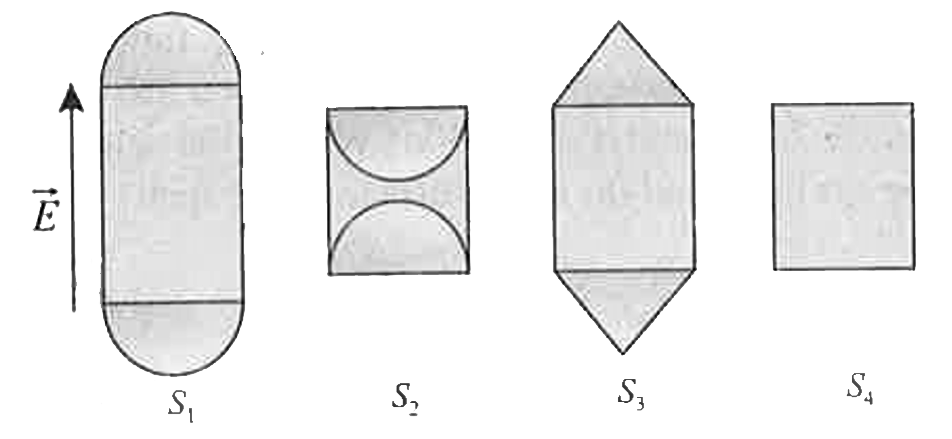
net flux through all the four Gaussian surface will be equal
the electric flux though the top end cops will be equal
the electric flux through the top end cap S1 is greatest
the electric flux through the top end cop S3 is greatest
The correct Answer is:a,b
Step by step video, text & image solution for Figure shows four Gaussian surfaces consisting of identical cylindrical midsections but different end caps. The surfaces central axis of each . Cylindrical midsection , the end caps have these shapes, S_(1) convex hemispheres S_(2) concave hemisphere S_(3) cones S_(4)e flat disks. rank the surfaces according to (a) the net electric flux through them and (b) the electric flux through the top end caps , greatest first. by Physics experts to help you in doubts & scoring excellent marks in Class 12 exams.
Updated on:21/07/2023Topper's Solved these Questions
- ELECTRIC FLUX AND GAUSS LAWBook:CENGAGE PHYSICSChapter:ELECTRIC FLUX AND GAUSS LAWExercise:Subjective type
Explore 7 Videos
- ELECTRIC CURRENT AND CIRCUITBook:CENGAGE PHYSICSChapter:ELECTRIC CURRENT AND CIRCUITExercise:Interger
Explore 8 Videos
- ELECTRIC POTENTIALBook:CENGAGE PHYSICSChapter:ELECTRIC POTENTIALExercise:DPP 3.5
Explore 14 Videos
Similar Questions
A surfaces=10ˆj is kept in an electric field. E=2ˆi+4ˆj+7ˆk. How must electric flux will come out through the surface ?
View SolutionA conducting sphere S1 intersects a closed surface S2 as shown in the figure.A positive charge q is placed at a point P .What is the value of electric flux through the surface S2 ? q P
View Solution
Knowledge Check
Figure shows four Gaussian surfaces consisting of identical cylindrical midsections but different end caps. The surfaces central axis of each . Cylindrical midsection , the end caps have these shapes, S1 convex hemispheres S2 concave hemisphere S3 cones S4e flat disks. rank the surfaces according to (a) the net electric flux through them and (b) the electric flux through the top end caps , greatest first.
 Anet flux through all the four Gaussian surface will be equalBthe electric flux though the top end cops will be equalCthe electric flux through the top end cap S1 is greatestDthe electric flux through the top end cop S3 is greatest
Anet flux through all the four Gaussian surface will be equalBthe electric flux though the top end cops will be equalCthe electric flux through the top end cap S1 is greatestDthe electric flux through the top end cop S3 is greatestThree point charges are placed as shown in the figure. S is a gaussian surface ϕ is the net flux passing through surface A and E be the electric field at point P on the surface, then
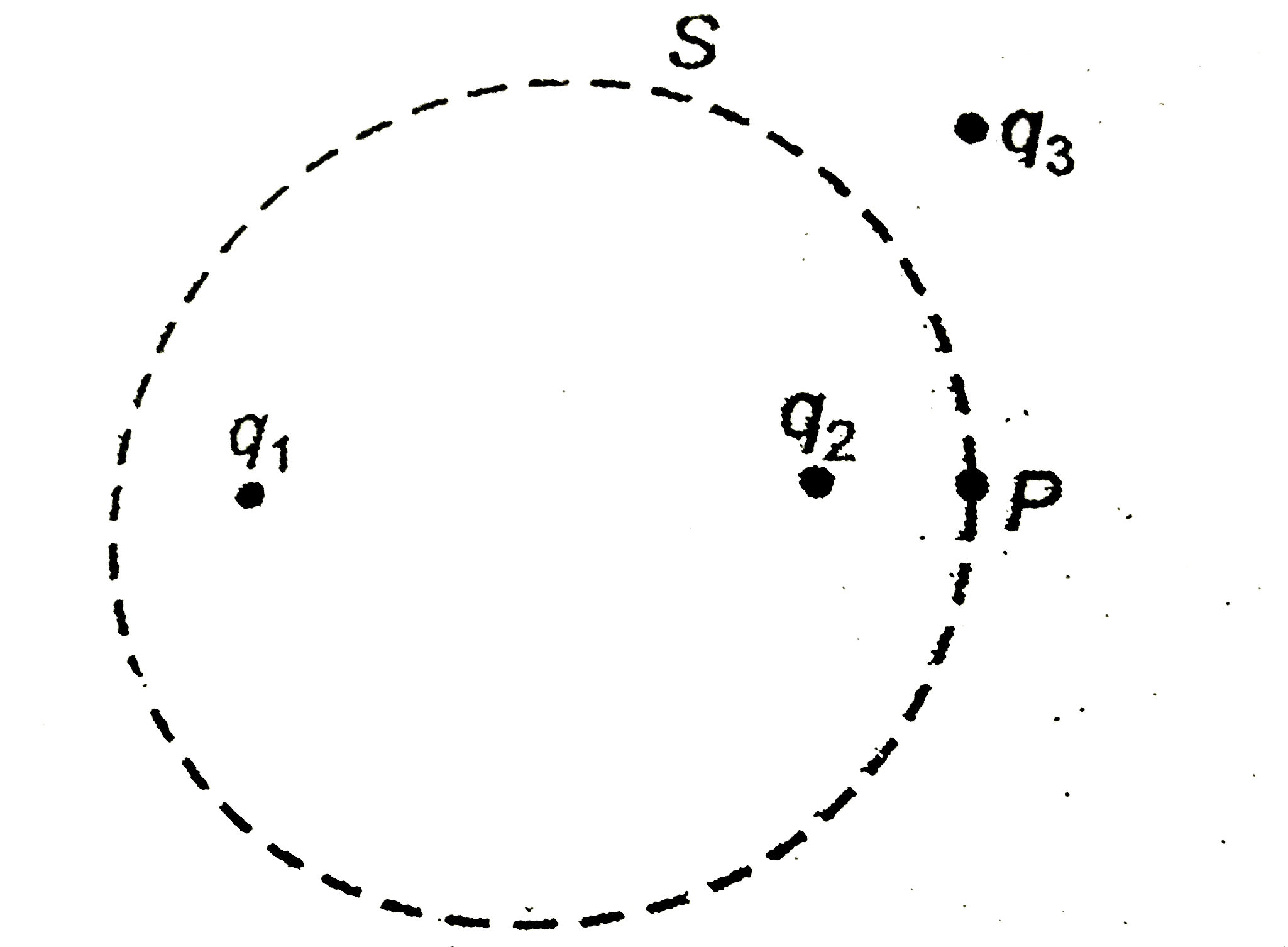 AFlux ϕ is due to q1 and q3 onlyBFlux ϕ is due to q1 and q2CElectric field at point P is due to q1 and q2 onlyDFlux ϕ is due to q3 only
AFlux ϕ is due to q1 and q3 onlyBFlux ϕ is due to q1 and q2CElectric field at point P is due to q1 and q2 onlyDFlux ϕ is due to q3 onlyS1andS2 are two hollow concentric spheres enclosing charge Q and 2Q, respectively, as shown in figure. What is the ratio of the electric flux leaving through the surface of S1andS2?
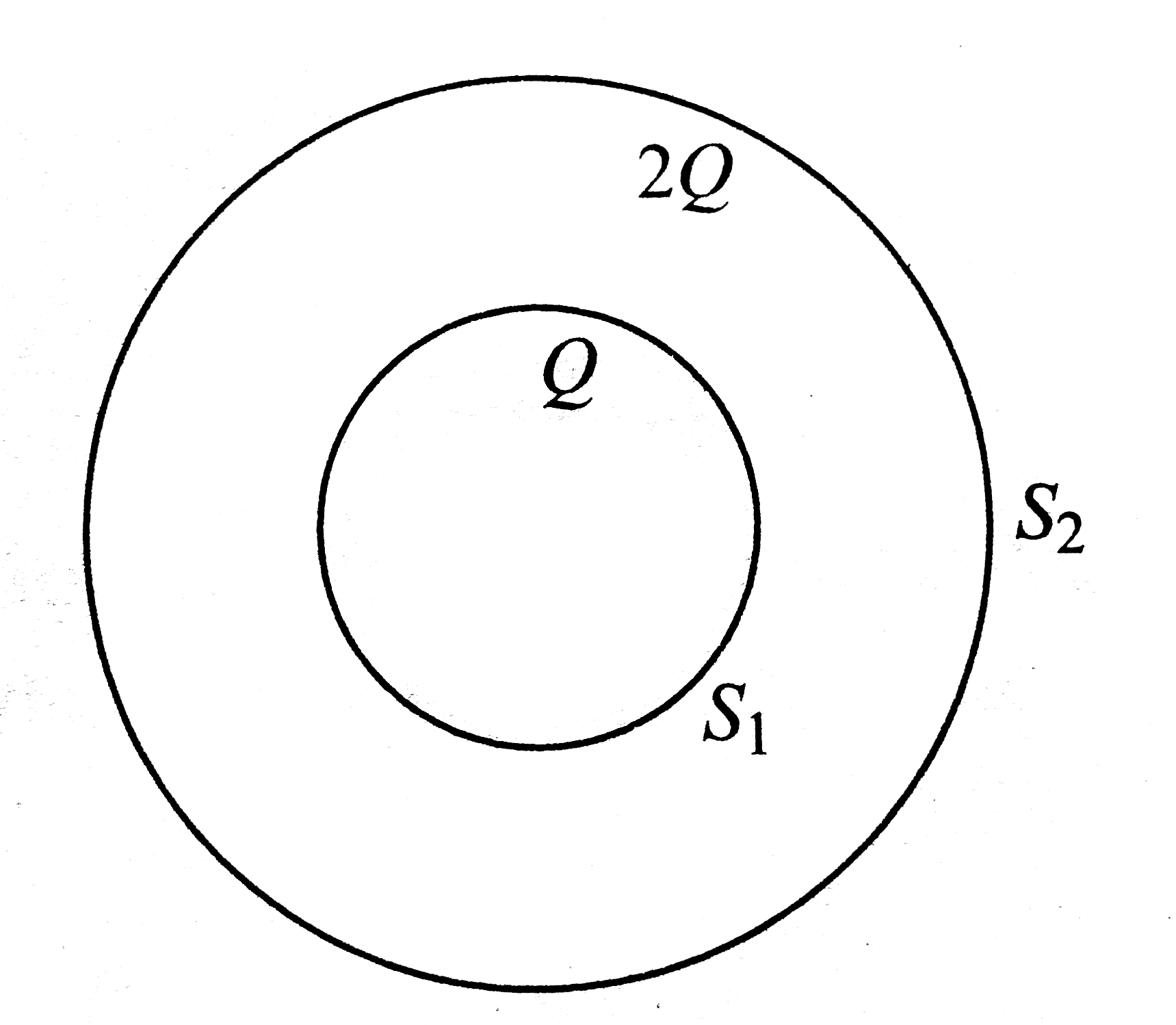 A14B12C13D23
A14B12C13D23
The figure indicates three small patches 1, 2, and 3 that lie on the surfaces of two imaginary spheres, the spheres are centered on an isotropic point source S of sound. The rates at which energy is transmitted through the three patches by the sound waves are equal. Rank the patches according to (a) the intensity of the sound on them and (b) their area, greatest first.
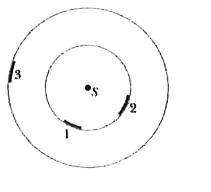
View SolutionShow three points charges +2q. -q and +3q, Two charges +2q and -q are enclosed within a surface 'S' What is the electric flux due to this configuration through the surface 'S' ?
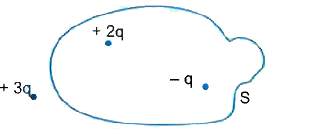
View SolutionConsider the hemispherical closed surface as shown in Fig. 3.19. if the hemisphere is a uniform magnetic field that makes an angle θ with the vertical, calculate the magnetic flux
(a) through the flat surface S1.
(b) through the hemisphere surface S2.

View SolutionA point charge q is placed near hemisperical suface without base, cylindrical surface with one end open sperical surface and hemispherical surface with base as shown in the figure in (a) (b) (c) and (d) respectively In wihich of the following cases m the flux crossing through the surface is zero ?

View SolutionFigure shows four charges q1,q2,q3,andq4 fixed is space. Then the total flux of the electric field through a closed surface S, due to all the charges, is
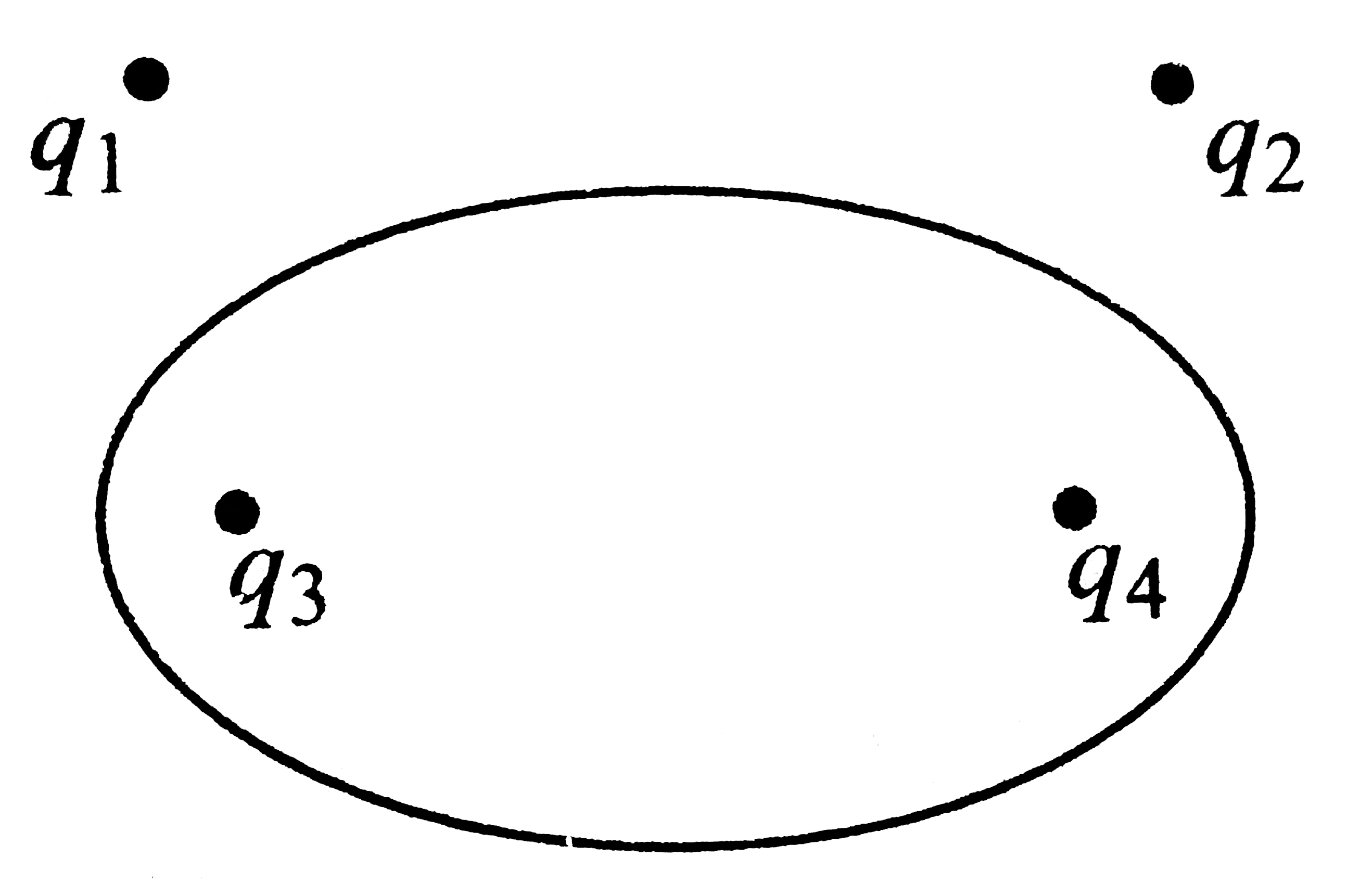
View Solution

